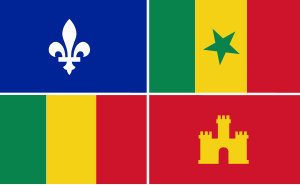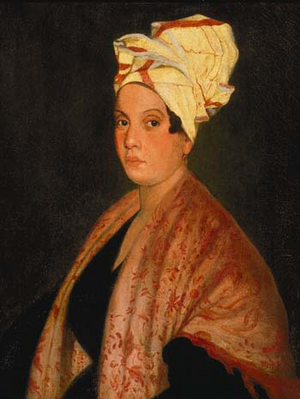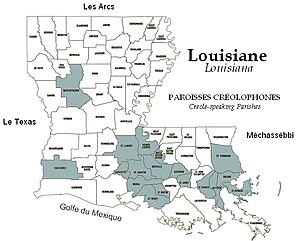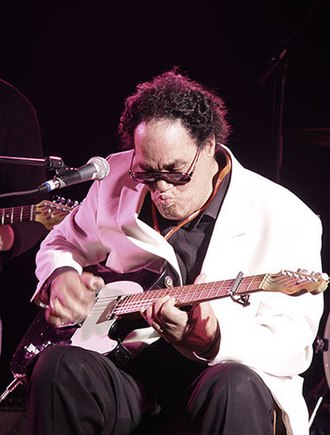Discover Your Roots
SIGN UPDiscover Your Roots
SIGN UPLouisiana is a female name of American origin that means "Name Of A US State". It is derived from the state of Louisiana, which is located in the Deep South and South Central regions of the United States. The name reflects the rich history and diverse cultural heritage of the state, including its unique French influence, multilingualism, and multiculturalism. Louisiana is known for its vibrant ecosystems, including coastal marshes, swamps, and diverse wildlife. The state has a complex history, from its pre-colonial origins to its role in the Civil War and post-war developments. The name Louisiana carries the essence of resilience, diversity, and cultural richness embodied by the state it represents.

Louisiana Creoles, also known as Créoles de la Louisiane, are an ethnic group with roots in the colonial Louisiana period under French and Spanish rule. They maintain cultural ties through the use of French, Spanish, and Creole languages, and the practice of Catholicism. The term "Créole" was initially used to distinguish Louisiana-born individuals from those born elsewhere, regardless of their racial background. Over time, the identity of Creoles evolved, encompassing people of European, African, or mixed ancestry. The Creole population in Louisiana has been influenced by various immigrant groups, including Irish, Germans, and Italians, many of whom were Catholic. New Orleans, in particular, has a significant population of Creoles of color, with a diverse heritage including European, African, and Native American ancestry. This group has produced notable writers, poets, and civil activists. The 20th century marked changes in Creole identity, with some adopting the Cajun label and the American racial binary system impacting the community. While New Orleans is renowned for its Creole society, the Cane River area in northwest Louisiana has also developed a strong Creole culture. Today, most Creoles are found in the Greater New Orleans region and Acadiana, and Louisiana is often referred to as the Creole State. The Creole community has a rich and complex history, shaped by diverse cultural influences and historical events.

Louisiana Voodoo, also known as New Orleans Voodoo, was an African diasporic religion that thrived in the Mississippi River valley and particularly in New Orleans from the 18th to the early 20th centuries. It was a blend of West and Central African traditional religions, Roman Catholic Christianity, and Haitian Vodou. The religion emerged as a result of syncretism and was not centrally controlled, with autonomous groups organizing its practices.Enslaved West and Central Africans, mainly of Bambara and Bakongo origins, brought their traditional beliefs to the French colony of Louisiana in the early 18th century. These beliefs fused with Roman Catholicism and later with Haitian Vodou, which was brought by migrants fleeing the Haitian Revolution in the early 19th century. Louisiana Voodoo was primarily practiced by black individuals, with some white involvement, and spread up the Mississippi River to Missouri.Despite never being officially banned, Louisiana Voodoo faced opposition from the government, leading to arrests and prosecutions of its practitioners. Prominent figures like Marie Laveau attracted increased attention to the religion in the mid-19th century. Although the religion declined in the early 20th century, some of its practices survived through hoodoo.Voodoo's beliefs and practices are partially known from historical records, revealing the veneration of various deities and the involvement of animal sacrifices and live snakes in rituals. Each Voodoo group was independent and typically led by a priestess or priest

Louisiana Creole is a French-based creole language spoken by fewer than 10,000 people, mostly in the U.S. state of Louisiana. Also known as Kouri-Vini, it is spoken today by people who may racially identify as white, black, mixed, and Native American, as well as Cajun and Creole. Louisiana Creole is considered an endangered language due to the rapidly shrinking number of speakers.The language developed in 18th-century Louisiana from interactions among speakers of the lexifier language of Standard French and several substrate or adstrate languages from Africa. It emerged as a contact language between exogenous ethnicities, and once transmitted to the next generation, it effectively became a creole language. The term Kouri-Vini has been promoted to avoid confusion with Louisiana French, and the language's historical documentation dates back to the colonial period.Louisiana Creole's origins are closely tied to the colonization of Louisiana by the French and the forced migration of Acadians from Acadia in the mid-18th century. The importation of enslaved Africans also played a significant role in the language's development, with West African languages becoming the substrates to a varied French lexifier.Despite the linguistic confusion and the dwindling number of speakers, efforts have been made by language activists to preserve and promote Louisiana Creole, particularly through the use of the term Kouri-Vini to distinguish it from Louisiana French.

Louisiana Red, born Iverson Minter, was a prolific American blues guitarist, harmonica player, and singer who left an indelible mark on the blues music scene. Born in Bessemer, Alabama, in 1932, his early life was marked by tragedy, losing his parents and facing hardships that shaped his music and lyrics. He served in the U.S. Army during the Korean War and later embarked on a successful career in music, recording more than 50 albums and collaborating with renowned artists such as Muddy Waters and John Lee Hooker. Louisiana Red's music encompassed both traditional acoustic and urban electric styles, showcasing his mastery of slide guitar. He faced challenges in his native country but found success and appreciation in Germany, where he lived from the 1980s until his passing in 2012. Throughout his life, he married three times and raised a family while leaving a lasting legacy in the blues world. Louisiana Red's journey and music are documented in films such as 'Red and Blues,' providing an intimate look into his experiences as an elderly African-American blues artist residing in Europe. His discography includes a wide range of albums, showcasing his versatility and enduring impact on the blues genre.

All images displayed on this page are sourced from Wikipedia or Wikimedia Commons.We use these images under their respective Creative Commons or public domain licenses. Wherever applicable, author attributions and license information are provided. If you believe an image is used incorrectly or outside its license terms, please contact us so that we can review and correct the issue.